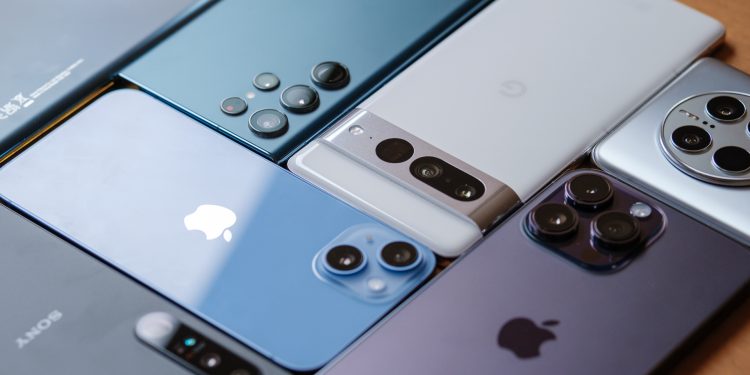In a world where technology is rapidly advancing, mobile phones have become a ubiquitous part of our daily lives. However, this increase in mobile usage has a dark side: a growing mountain of electronic waste, or e-waste. The article ‘How Buying Used Mobiles Helps Combat E-waste and Promotes a Greener Planet’ explores the significant environmental impact of discarded mobile phones and how the act of purchasing used devices can be a powerful tool in the fight against e-waste, fostering a more sustainable future.
Key Takeaways
- Purchasing used mobiles directly contributes to the reduction of e-waste, helping to alleviate its harmful environmental impact.
- Extending the lifespan of mobile devices through the second-hand market reduces the need for new resources and manufacturing processes.
- The re-commerce sector, including certified pre-owned programs, plays a crucial role in promoting sustainability in the electronics industry.
- Challenges such as device functionality, security, and consumer stigma can be addressed through rigorous testing, education, and innovative recycling practices.
- Individual actions, such as making informed purchasing decisions and supporting eco-friendly initiatives, are vital for driving change towards a greener planet.
The Environmental Impact of Mobile Phone Waste
Understanding E-waste and Its Consequences
Electronic waste, or e-waste, encompasses a broad range of discarded electronic devices, with mobile phones being a significant contributor. As technology rapidly advances, the lifespan of these devices shortens, leading to an ever-growing pile of obsolete gadgets. The consequences of e-waste are far-reaching, affecting both the environment and human health.
- Toxic substances: Mobile phones contain hazardous materials like lead, mercury, and cadmium, which can leach into the soil and water.
- Resource depletion: The production of new devices depletes finite resources, such as rare earth elements.
- Carbon emissions: The manufacturing and disposal processes of mobile phones contribute to carbon emissions, exacerbating climate change.
The sheer volume of e-waste generated annually is staggering, and without proper management, it poses a serious threat to our planet. It’s not just about the waste itself, but the lost opportunity to recover valuable materials and reduce environmental harm.
The key to mitigating these consequences lies in responsible disposal, recycling, and the promotion of a circular economy where products are reused and repurposed. By understanding the impact of e-waste, we can begin to take steps towards a more sustainable future.
The Lifecycle of a Mobile Phone
The journey of a mobile phone from production to disposal is more complex than one might initially think. It begins with the extraction of raw materials, followed by manufacturing, packaging, and distribution. Once in the hands of consumers, the usage phase varies greatly, with some devices lasting several years while others are replaced annually.
- Extraction of raw materials
- Manufacturing and assembly
- Packaging and distribution
- Consumer use
- Disposal or recycling
The end of a mobile phone’s life is particularly impactful. Most devices end up in landfills, where they can leach toxic substances into the environment. However, a phone’s lifecycle can be extended through refurbishment and resale, which is a key aspect of reducing e-waste.
By choosing to buy used mobiles, consumers can interrupt this cycle, giving devices a second life and significantly reducing the environmental burden.
Hazardous Materials in Mobile Phones
Mobile phones are composed of a complex mix of materials, some of which are hazardous to both the environment and human health. When disposed of improperly, these substances can leach into soil and water, causing significant ecological damage.
- Lead
- Mercury
- Cadmium
- Arsenic
- Brominated flame retardants
These materials are particularly concerning because they do not break down easily and can accumulate in living organisms, leading to a variety of health issues. It’s crucial for consumers to recognize the importance of proper disposal or, better yet, the reuse and recycling of mobile devices to prevent these toxins from entering the environment.
By choosing to buy used mobiles, individuals can help minimize the release of these hazardous substances into the ecosystem, thereby contributing to a healthier planet.
Benefits of Buying Used Mobiles
Extending the Life of Devices
By opting for a used mobile phone, consumers play a crucial role in extending the lifespan of devices. This practice not only keeps phones out of landfills longer but also maximizes the use of the resources that went into their production.
When a single mobile phone’s life is extended, the environmental benefits are multiplied across the millions of units that are otherwise discarded annually.
The following points highlight the importance of device longevity:
- Conservation of resources: Each device retained in circulation means fewer new materials need to be mined and processed.
- Energy efficiency: Manufacturing new devices is energy-intensive. Using phones for longer reduces the overall energy demand.
- Waste reduction: Prolonging the life of mobile phones directly decreases the volume of e-waste generated.
Encouraging the reuse of mobile phones is a simple yet effective way to contribute to a more sustainable future.
Reducing the Demand for New Resources
When consumers opt for used mobile phones, they play a crucial role in lessening the need for new materials. Manufacturing a single smartphone requires a significant amount of precious metals and rare earth elements, which are often sourced from environmentally sensitive areas. By purchasing used devices, individuals help to conserve these finite resources and mitigate the environmental damage caused by mining and extraction.
The choice to buy used over new is a simple yet powerful act of environmental stewardship.
The following list highlights the key resources conserved when opting for a used mobile phone:
- Gold
- Silver
- Copper
- Palladium
- Rare earth elements
Each of these materials has an environmental cost associated with its extraction and processing. By reducing the demand for new resources, the market for used mobiles supports a more sustainable and responsible approach to consumption.
Lowering Carbon Footprint
Purchasing a used mobile phone can significantly lower the carbon footprint associated with mobile device production. For each new phone manufactured, a substantial amount of CO2 is emitted during the extraction of raw materials, manufacturing, and transportation processes. By opting for a used device, consumers directly reduce the demand for these energy-intensive activities.
- Extraction of raw materials: High CO2 emissions
- Manufacturing process: Energy-intensive production
- Transportation: Long-distance shipping contributes to emissions
By extending the lifecycle of mobile phones, we not only conserve resources but also minimize the carbon emissions tied to the production of new devices. This simple act of choosing a used phone over a new one can have a profound impact on our planet’s health.
How the Second-Hand Market Promotes Sustainability
The Role of Re-commerce in Waste Reduction
Re-commerce, or reverse commerce, plays a pivotal role in mitigating the environmental impact of electronic waste. By facilitating the sale and purchase of used mobile phones, re-commerce platforms extend the lifecycle of these devices and significantly reduce the volume of e-waste.
The adoption of re-commerce practices has led to a substantial decrease in the need for new devices, which in turn lessens the extraction of raw materials and energy consumption associated with manufacturing. This not only conserves natural resources but also minimizes the carbon emissions tied to production processes.
The success of re-commerce is evident in the growing market for used mobiles, which encourages consumers to consider pre-owned devices as a viable alternative to new ones.
The following list highlights the key contributions of re-commerce to waste reduction:
- Encouraging the reuse and resale of mobile phones
- Decreasing the frequency of device upgrades
- Promoting the repair and refurbishment of older models
- Supporting a circular economy where products are kept in use for as long as possible
Certified Pre-owned Programs
Certified pre-owned (CPO) programs are a cornerstone in the second-hand mobile market, offering a reliable alternative to new devices. These programs ensure that used mobiles meet certain quality standards before resale, providing consumers with confidence in their purchases. CPO devices often come with warranties and have undergone rigorous testing and refurbishment processes.
- Rigorous testing and inspection
- Necessary repairs and refurbishments
- Extended warranties
- Support from the original manufacturer or certified reseller
Through these programs, buyers can trust that they are getting a device that not only works like new but also contributes to environmental sustainability by extending the product’s lifecycle. Moreover, CPO programs can significantly reduce electronic waste by reintroducing functional devices into the market that might otherwise be discarded.
By choosing a certified pre-owned mobile, consumers play an active role in reducing e-waste and supporting a more sustainable electronics industry.
Consumer Attitudes Towards Used Electronics
The shift in consumer attitudes towards used electronics is pivotal in driving the second-hand market. Awareness of environmental issues and the desire for more sustainable consumption are influencing buying behaviors. However, the perception of used mobiles is still mixed, with concerns about quality and reliability being prevalent.
- Positive Perceptions:
- Greater awareness of environmental impact
- Appreciation for the value of refurbished devices
- Support for reducing e-waste
- Negative Perceptions:
- Worries about device functionality
- Fear of hidden defects
- Preference for the latest technology
Embracing used electronics not only alleviates the strain on the environment but also offers consumers the opportunity to access technology at a more affordable price point. The challenge lies in bolstering confidence in the quality of used devices.
The market for used mobiles will continue to grow as long as consumer confidence is nurtured through transparent practices and the provision of warranties or guarantees. This shift is essential for a sustainable future, where the lifecycle of electronics is extended, and the generation of e-waste is curtailed.
Challenges and Solutions in the Used Mobile Market
Ensuring Functionality and Security
When purchasing a used mobile phone, ensuring its functionality and security is paramount. Buyers must have confidence that the device will operate as expected and that their personal data will remain secure. To address these concerns, sellers can adopt a series of measures:
- Conduct thorough testing of all device functions.
- Perform a factory reset to clear previous data.
- Provide a clear history of the device, including any repairs or replacements.
- Offer warranties or guarantees to reassure buyers.
Ensuring that a used mobile is both functional and secure not only protects the consumer but also strengthens the market for pre-owned electronics, fostering a more sustainable cycle of use and reuse.
The implementation of standardised checks and certifications can further enhance trust in the second-hand market. For example, a checklist for sellers might include:
- Battery health assessment
- Screen and button functionality tests
- Audio and microphone quality checks
- Connectivity and network verification
- Software and security updates
By adhering to these guidelines, the used mobile market can overcome potential barriers related to device performance and data security, making it an attractive and responsible choice for consumers.
Overcoming the Stigma of Used Electronics
The stigma surrounding used electronics often stems from misconceptions about their reliability and performance. To combat this stigma, education and positive customer experiences are crucial. Retailers and manufacturers can play a significant role by providing detailed product histories and offering warranties for pre-owned devices.
- Transparency: Detailed product condition reports.
- Warranties: Offering peace of mind to consumers.
- Success Stories: Sharing positive experiences from satisfied customers.
- Quality Assurance: Rigorous testing and certification processes.
By fostering a culture that values sustainability and quality, we can shift consumer perceptions and make the second-hand market a more trusted and viable option for electronics. This not only benefits the environment but also offers consumers a cost-effective alternative to new devices.
Recycling and Upcycling Strategies
The final stage in the life of any mobile phone, whether it’s been used by one person or ten, is disposal. Recycling and upcycling are critical strategies in ensuring that this end stage has a minimal environmental impact. Recycling involves breaking down the phone into its component parts, which can then be reused in the manufacturing of new products. Upcycling, on the other hand, takes this concept further by repurposing phones or their parts into entirely new products with different functions.
By adopting recycling and upcycling strategies, we not only prevent harmful materials from entering landfills but also reduce the need to extract new raw materials.
Here are some steps involved in the recycling and upcycling process:
- Collection and sorting of used mobile phones.
- Safe extraction of hazardous materials.
- Refurbishing functional components for reuse.
- Creative repurposing of non-functional parts.
These steps help in creating a circular economy, where waste is minimised and the value of products is maximized. It’s a concerted effort that requires the participation of consumers, manufacturers, and recycling facilities alike.
Taking Action for a Greener Planet
Making Informed Purchasing Decisions
When it comes to combating e-waste, the power lies significantly in the hands of the consumer. Making informed purchasing decisions is a critical step towards a more sustainable future. By choosing to buy used mobile phones, consumers can directly influence the market and environmental outcomes.
- Research the device’s lifespan and repairability before purchase.
- Consider the necessity of upgrades and whether current devices meet needs.
- Look for certified pre-owned options that guarantee quality and reliability.
Opting for a used mobile not only saves money but also sends a message to manufacturers about the demand for sustainable products. It’s a choice that reflects both economic and environmental prudence.
Finally, understanding the true cost of electronics is not just about the price tag—it’s about considering the environmental cost of production and disposal. By prioritizing longevity and repairability, consumers can take a stand against the throwaway culture that contributes to e-waste.
Supporting Eco-Friendly Brands and Initiatives
When we choose to support eco-friendly brands and initiatives, we are not just purchasing a product; we are endorsing a philosophy that prioritises the health of our planet. By investing in companies that are committed to sustainable practices, consumers can drive the market towards greener solutions.
- Look for certifications like Fairphone’s ethical materials sourcing or the Energy Star label.
- Support companies that offer take-back or recycling programs for their products.
- Encourage brands that design for longevity, not planned obsolescence.
Making a conscious choice to support eco-friendly brands is a powerful statement. It signals to the industry that there is a demand for products that are not only innovative and high-performing but also responsible and sustainable.
Remember, every purchase is a vote for the kind of world we want to live in. By aligning our spending with our values, we can contribute to a larger movement that promotes environmental stewardship and responsible consumption.
Advocacy and Education for Sustainable Practices
Advocacy and education are pivotal in shifting public perception and consumer behavior towards more sustainable practices. Educational campaigns and advocacy efforts can significantly influence the adoption of greener choices in our daily lives, including the decision to buy used mobile phones.
- Educational Campaigns: Informing consumers about the benefits of buying used devices and the impact of e-waste.
- Advocacy Groups: Working to change policies and regulations to support sustainable practices.
- Community Engagement: Encouraging local communities to participate in recycling and upcycling programs.
By fostering a culture of sustainability, we empower individuals to make choices that benefit the environment and promote a circular economy. It’s not just about making a single greener choice; it’s about transforming our habits and the market to create a lasting impact.
The collective effort of consumers, businesses, and policymakers is essential to drive the change towards a more sustainable future. It is through continuous education and strong advocacy that we can overcome the challenges of e-waste and support a healthier planet.
Conclusion
In conclusion, the choice to buy used mobiles is more than a savvy economic decision; it’s a step towards environmental sustainability. By opting for pre-owned devices, consumers play a crucial role in reducing e-waste, conserving resources, and promoting a greener planet. This simple yet impactful action helps to extend the lifecycle of mobile phones, minimises the demand for new products, and consequently, lessens the environmental burden. As we continue to navigate a world increasingly dependent on technology, making conscious choices like buying used mobiles from Wise Market can significantly contribute to a more sustainable future for all.
Frequently Asked Questions
How does buying used mobiles help reduce environmental impact?
Buying used mobiles extends the lifecycle of devices, reduces the demand for new resource extraction, and lowers the carbon footprint associated with manufacturing new phones, thereby contributing to environmental sustainability.
What are the consequences of e-waste on the environment?
E-waste contributes to pollution, as hazardous materials from discarded electronics can leach into soil and water. It also adds to the growing problem of landfill overcrowding and can lead to resource depletion if not properly recycled.
What hazardous materials are found in mobile phones?
Mobile phones can contain toxic substances like lead, mercury, cadmium, and certain flame retardants, which can be harmful to the environment and human health if not disposed of responsibly.
How does the second-hand market promote sustainability?
The second-hand market encourages the reuse of electronics, thereby reducing waste and the need for new production. It also supports a circular economy, where products are used for as long as possible before being recycled or upcycled.
What are some challenges in the used mobile market?
Challenges include ensuring the functionality and security of used devices, overcoming the stigma associated with second-hand electronics, and establishing effective recycling and upcycling strategies.
How can I contribute to a greener planet when purchasing a mobile phone?
You can contribute by making informed purchasing decisions, such as buying certified pre-owned devices, supporting brands with eco-friendly initiatives, and advocating for sustainable practices in electronics consumption.






